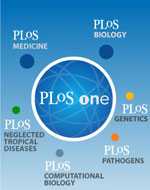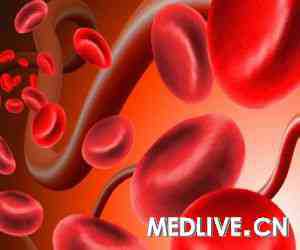PLoS ONE:MN1基因表达可能预示急性髓系白血病(AML)预后难题
2012-12-10 Beyond 生物谷
当急性髓系白血病(AML)患者高表达MN1基因时,白血病病程恶化会加快,患者生存期会缩短。虽然这是一个众所周知的事实,但其中所涉及的机制还不是很清楚。近日,维克森林大学浸信会医疗中心的研究人员就此开展了相关深入研究。 维克森林大学浸信会血液学和肿瘤学助理教授Timothy S. Pardee医学博士说,以往的研究表明,当
当急性髓系白血病(AML)患者高表达MN1基因时,白血病病程恶化会加快,患者生存期会缩短。虽然这是一个众所周知的事实,但其中所涉及的机制还不是很清楚。近日,维克森林大学浸信会医疗中心的研究人员就此开展了相关深入研究。
维克森林大学浸信会血液学和肿瘤学助理教授Timothy S. Pardee医学博士说,以往的研究表明,当患者的MN1基因高表达时,化疗对患者不会带来任何帮助,反而患者生存期越短。Pardee说:没有人真正知道为什么会发生这种情况,研究人员推测MN1基因的高表达是白血病患者能抗化疗治疗的原因之一。
急性髓系白血病的特征是高复发率和抗化疗。对于那些高表达MN1的老年患者来说,平均存活时间小于6个月,而表达MN1的患者生存期接近至九个月。这项研究发表在8月的PLOS One杂志上。为了检验MN1基因的高表达是白血病患者能抗化疗治疗的原因之一这一假设, Pardee使得白血病细胞高表达基因MN1,看着这些细胞是如何应对化疗的。研究人员通过使用逆转录病毒增高MN1基因表达以及利用急性髓系白血病基因小鼠模型开展研究。结果与小鼠体内不表达MN1基因小鼠相比,高表达基因MN1的小鼠预后更差。此外,他也采取了同样的逆转录病毒,将MN1基因导入来源AML患者的两个人细胞株。
研究人员分析了是否两个细胞对化疗耐药反应是一致的,结果答案是肯定的。Pardee说:就结果而言小鼠白血病细胞对化疗的抵抗更加明显,Pardee将高表达MN1水平的小鼠白血病细胞和那些被化疗抑制的癌细胞相比,其中一个关键蛋白p53对白血病细胞抗化疗起到了关键性作用。
Pardee表示,他们研究了与白血病细胞死亡相关的其他一些蛋白质,结果发现BIM能促进白血病细胞的死亡,BIM蛋白质在细胞中往往是被关闭的,这样有助细胞提高MN1的表达水平。Pardee说:我们的最终目标是找出更好的方法来治疗这些病人,当我们用药物处理使得白血病细胞p53蛋白水平增加时,我们能够使得白血病细胞对化疗的敏感性增加,这表明这可能是治疗表达高MN1患者的治疗策略之一。

doi:10.1371/journal.pone.0043185
PMC:
PMID:
Overexpression of MN1 Confers Resistance to Chemotherapy, Accelerates Leukemia Onset, and Suppresses p53 and Bim Induction
Timothy S. Pardee
Background The transcriptional co-activator MN1 confers a worse prognosis for patients with acute myeloid leukemia (AML) when highly expressed; however, the mechanisms involved are unknown. We sought to model the effects of high MN1 expression in AML models to explore the underlying mechanisms.
Methodology/Principal Findings We used cell lines and a genetically defined mouse model of AML to examine the effects of MN1 overexpression on prognosis and response to cytarabine and doxorubicin in vitro and in vivo. Murine AML that was engineered to overexpress MN1 became more aggressive in vivo, leading to shortened survival in both treated and control groups. In vitro murine AML cells that overexpressed MN1 became resistant to treatment with cytarabine and highly resistant to doxorubicin. This resistant phenotype was also seen in vivo, where treatment with the combination of cytarabine and doxorubicin selected for cells expressing MN1. When therapy-induced DNA damage levels were assessed by γH2AX foci, no reduction was seen in MN1 expressing cells arguing against a drug efflux mechanism. Despite no reduction in DNA damage, MN1-expressing cells showed less apoptosis as assessed by annexin V and propidium iodide staining. Following treatment, p53 and BIM induction were markedly reduced in cells expressing MN1. Pharmacologic inhibition of the p53 E3 ligase MDM2 resulted in increased p53 levels and improved response to doxorubicin in vitro.
Conclusions/Significance MN1 overexpression accelerates an already aggressive leukemia, confers resistance to chemotherapy, and suppresses p53 and BIM induction, resulting in decreased apoptosis. This provides a mechanistic explanation of the poor prognosis observed with high MN1 expression and suggests that therapies directed at increasing p53 function may be useful for these patients.
(责任编辑:yan.mao)
分享到:本网站所有内容来源注明为“梅斯医学”或“MedSci原创”的文字、图片和音视频资料,版权均属于梅斯医学所有。非经授权,任何媒体、网站或个人不得转载,授权转载时须注明来源为“梅斯医学”。其它来源的文章系转载文章,或“梅斯号”自媒体发布的文章,仅系出于传递更多信息之目的,本站仅负责审核内容合规,其内容不代表本站立场,本站不负责内容的准确性和版权。如果存在侵权、或不希望被转载的媒体或个人可与我们联系,我们将立即进行删除处理。
在此留言












#Plos one#
65
#髓系白血病#
62
#基因表达#
59